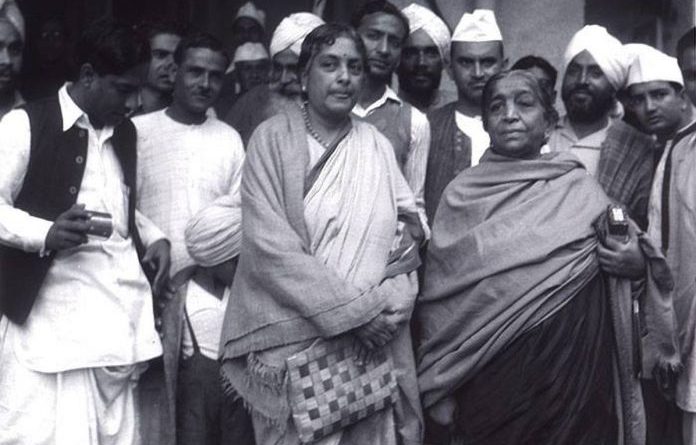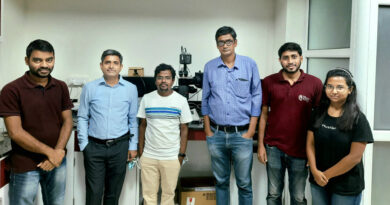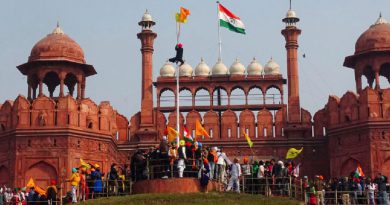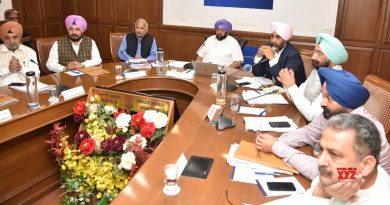KamalaDevi Chattopadhyay – Backbone of Indian handicraft.
Kamaladevi Chattopadhyay was an actress, social worker, freedom fighter, youth leader, socialist, women’s movement organizer, and chair of post-independence India’s craft council. She nurtured the greater majority of the country’s national institutions charged with the promotion of dance, drama, art, theatre, music, and puppetry. A girl born on 3 April 1903 into a Saraswat Brahmin family in Mangalore, Karnataka. She became a child widow at a very young age of 11.
After her father’s death, her family shifted to Madras in 1917. So she joined theaters at a time when girls were mostly confined to the four walls of their homes. She moved past this orthodox practice by joining the theaters. One cannot even comprehend her determination, mental strength, and the amount of inner energy she possessed. She challenged this traditional society again by her love marriage with Harindranath in 1919. Thus, in a civil registry ceremony who belonged to Hyderabad.
Kamaladevi Chattopadhyay: Entry in Politics
Her first chance with politics came when she was at her maternal uncle’s house, a notable social reformer. Her house thronged by eminent lawyers, political luminaries, and public figures. Among them were Gopalkrishna Gokhale, Srinivasa Sastri, Pandita Ramabai, and Sir Tej Bahadur Sapru. By 1923, Kamaladevi, following the footsteps of Gandhi, enrolled herself in the nationalist struggle. As a member of the Congress party. Three years later, she had the unique distinction of being the first woman in India to run for political office. She stood for the first general elections and lost the race only by 55 votes. However, after India became independent in 1947, she refused to enter formal politics. Even Nehru offered to join the cabinet, but she declined the offer.
Kamaladevi Chattopadhya ( 03 April 1903- 29 October 1988) – Image Credit – Indian Express Archive
Even though she was a strong advocate of Salt Satyagraha. But she differed with Gandhiji’s decision to exclude women from the march. Furthermore arrested for entering the Bombay Stock Exchange to sell packets of salt . She captured the nation’s attention when in a scuffle over the Congress flag. As she clung to it tenaciously. At the same time, Kamaladevi was establishing political links outside India too. In 1926, she met the Irish-Indian suffragette Margaret Cousins, who founded the All India Women’s Conference. Later remained its president until Kamaladevi assumed that role in 1936.
Kamaladevi Chattopadhyay: As an author
She was a great author too and her first writings on the rights of women in India date to 1929. She traveled to Nanjing and Chongqing and met with resistance leaders. During the country’s occupation under Japanese rule. So, this resulted in a small book, In War-Torn China (1944). Given her inquisitiveness, she visited Japan. This lead to another book-: In Japan: Its Weakness and Strength (1944). The book talked about how the Japanese, who had sought to be the vanguard of pan-Asianism, had blood-soaked their hands .
Especially, with the most virulent strands of materialism and imperialism. She is also among a handful of people in India in the 1930s-1950s who wrote widely in the US. In Uncle Sam’s Empire (1944) and America: The Land of Superlatives (1946), she reverses the gaze. Reams and reams have been written of the saffron robe-clad monk, known to the world as Swami Vivekananda, visiting Chicago in 1993. Thereby bringing Hinduism to the New World.
Kamaladevi Chattopadhyay: As a Feminist
Yet we know little of the sari-clad Kamaladevi wandering around the United States. Thus making her way into prisons, union meetings, political conventions, black neighborhoods, and American homes. Moreover, leaving behind the distinct impression of an Indian feminist with strong nationalist and socialist inclinations. Hence, with the possibilities and limitations of the experiment with democracy.
 Morarji Desai presents the national UNESCO award for 1997 to Freedom Fighter Kamaladevi Chattopadhyay. (Express archive)
Morarji Desai presents the national UNESCO award for 1997 to Freedom Fighter Kamaladevi Chattopadhyay. (Express archive)
Indian writer Raja Rao, in introducing Kamaladevi Chattopadhyay’s memoirs, Inner Recesses Outer Spaces (1986), did Kamaladevi the unusual honor of describing her as “perhaps the most august woman on the Indian scene today. Firmly Indian and therefore universal, highly sophisticated both in sensibility and intelligence, she walks with everyone, in city and country with utter simplicity.”
 Kamaladevi Chattopadhyay Google doodle: The doodle of Kamaladevi Chattopadhyay was created by Finland-based Desi artist Parvati Pillai.
Kamaladevi Chattopadhyay Google doodle: The doodle of Kamaladevi Chattopadhyay was created by Finland-based Desi artist Parvati Pillai.
Contribution to Faridabad :
An interesting fact that many are unaware of the role played in giving birth to the present Faridabad. As the founding leader of the Indian Cooperative Union (ICU).As she took upon the job to resettle nearly 50,000 Pathans from the Northwest Frontier Province (NWFP). Furthermore, in the wake of the post-Partition migrations. Apart from her contribution to handicrafts, she also set up the Indian National Theatre (INT) in 1944. Thus, we today know as the National School of Drama. It was a movement to recognize and celebrate indigenous modes of performance. Like dance, folklore, and mushairas and help the freedom struggle.
Several cultural institutions in India today exist because of her vision. Including the Sangeet Natak Akademi, Central Cottage Industries Emporium, and the Crafts Council of India. She stressed the significant role which handicrafts and cooperative grassroots movements play. Hence, in the social and economic upliftment of the Indian people. Till the end, she faced great opposition both before and after independence from the power centers.
Ramchandra Guha (Historian) – “She is leader of same bracket like Nehru , Sardar , Ambedkar due to her contribution in building Modern India.”
In 1974, she was awarded the Sangeet Natak Academy Fellowship. The highest honor conferred by the Sangeet Natak Academy, India’s National Academy of Music, Dance & Drama. She was conferred with Padma Bhushan and Padma Vibhushan.By the Government of India in 1955 and 1987 respectively.
Reference –
https://indianexpress.com/article
http://www.open.ac.uk
https://en.wikipedia.org/wiki/Kamaladevi_Chattopadhyay
https://www.wikidata.org/wiki/Q3347911






Pingback: From Watchman to IIM Professor- Journey of Ranjith R